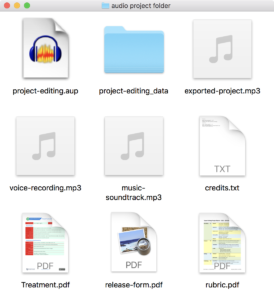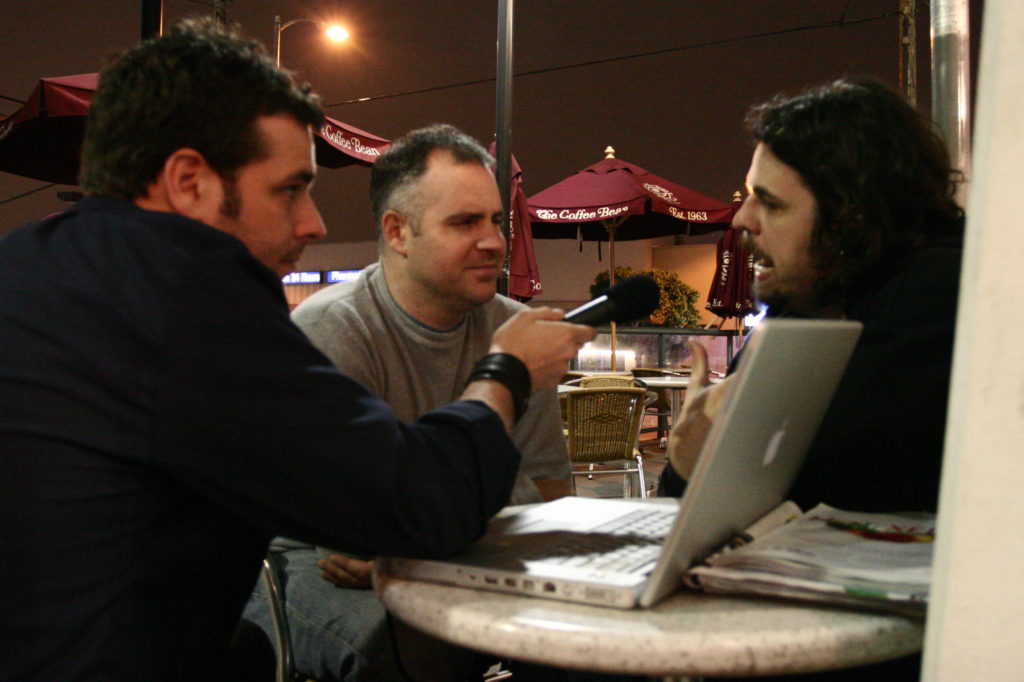Interview a Notre Dame student and produce a 5-8 minute podcast.
Learning goal: After successfully completing the project you will be able to capture, edit, and publish a voice recording with multiple tracks.
Client: Office of Admissions, University of Notre Dame
Audience: Potential applicants and their parents
Deliverables
- Treatment
- Raw Materials
- Final Product
FIles for this project are available on Google Drive.
You will be graded using this rubric.
This page describes a very similar project in detail.
Here’s what some past students produced for a similar project:
Pre-Production
Before you start, carefully choose a Notre Dame student who has
- Stories that are meaningful and positive about experiences in a class, study abroad, a research project, the residence hall, a club, a campus job, or service work;
- A voice that is pleasant to listen to and easy to understand; and
- Availability for recording and willingness to be published online.
 Before the interview, create a list of questions likely to elicit stories, not one-word answers. The subject should NOT read from a script.
Before the interview, create a list of questions likely to elicit stories, not one-word answers. The subject should NOT read from a script.
For each of the course projects, you will want to keep all of the files in a project folder like the one shown at right.
Production
Record both your subject and yourself. Use a recorder with an extra microphone or record on two separate devices and sync up the recordings later. Here are some important tips:
- Get close – recording far away amplifies noise, too close and you get breath sounds.
- Buffer zone – record 3 seconds of silence on purpose at the beginning and the end.
- Two takes – record everything twice and make a reality check after each take.
- Keep recording – If the subject stumbles, ask them to start again when ready.
Post-Production
After the interview, write and record an intro and wrap-up. Narrate yourself or ask someone else.
Mix your material with Audacity and create a podcast episode with the four segments outlined below.
| Content | Min | Max | |||
| (bumper music) | 0:05 | 0:10 | |||
| 1 | Intro | The narrator sets up the story and hooks the listeners. Perhaps ask a pointed question to keep them listening. | music? | 0:20 | 0:40 |
| (bumper music) | 0:03 | 0:07 | |||
| 2 | Body | The subject tells stories. At some point, they also need to tell us their info (name, class, major, and hometown). | (no music) | 4:00 | 6:00 |
| (bumper music) | 0:03 | 0:07 | |||
| 3 | Wrap-up | The narrator can provide additional info, explain a takeaway, issue a call to action, thank listeners, etc. | music? | 0:20 | 0:40 |
| (bumper music, continuing through the end) | 0:03 | 0:07 | |||
| 4 | Credits | Soundtrack title and artist and producer Narrator info, if not producer. Optional: where & when recorded. | Music | 0:10 | 0:25 |
| (bumper music) | 0:05 | 0:10 | |||
The last step is to publish the production on SoundCloud.
Below is an example of an edited interview from Story Corps
Image credit: “Interview with Douglas Sarine” by Douglas Scales

